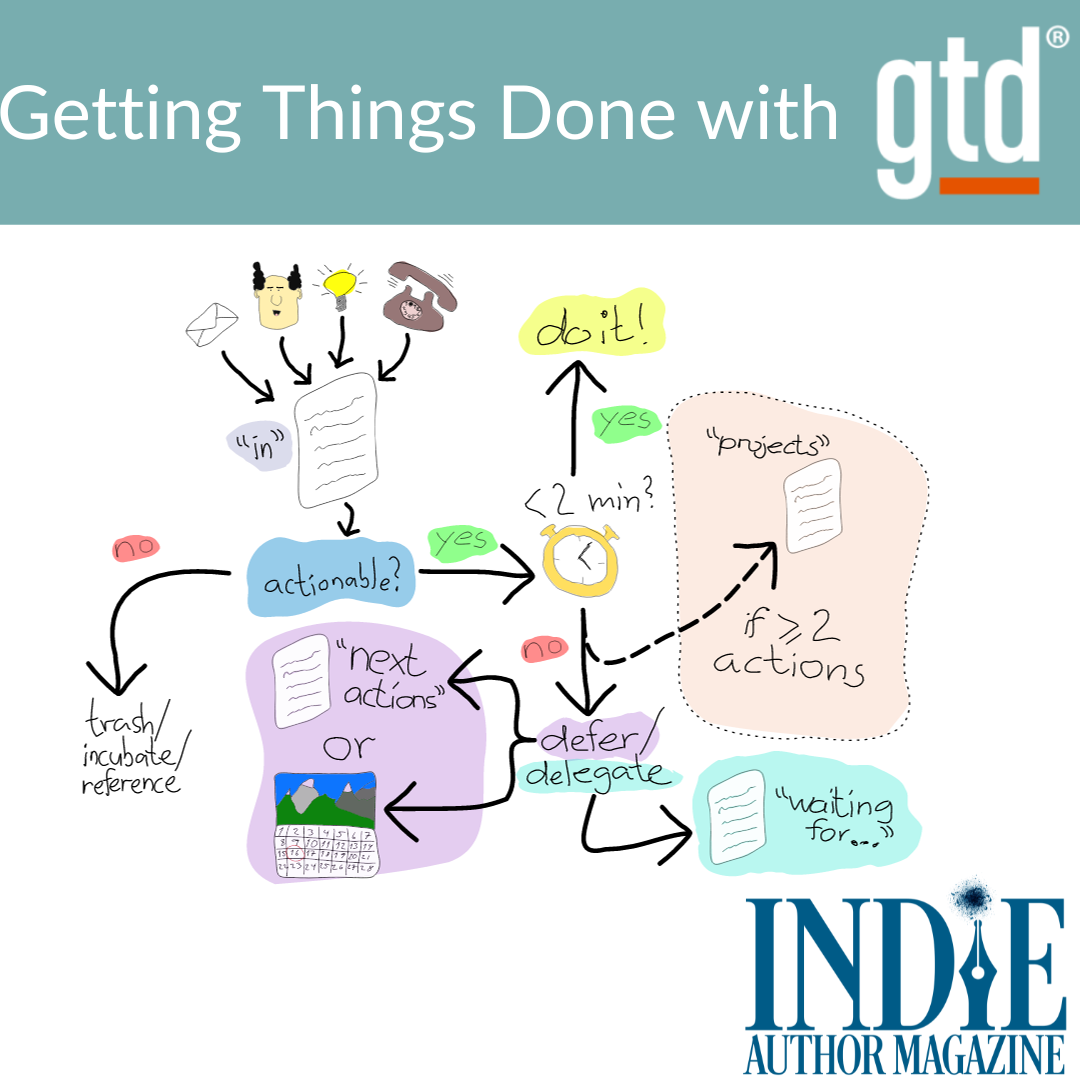The year may be winding down, but plenty of authors likely still have a lot of tasks on their indie author to-do list—and that’s in addition to holiday shopping. The more information in your head, the harder it is to know where to focus. Add enough to your plate, and you may just end up thinking about what you should be doing or worrying you’ll forget something rather than focusing on what you’re actually doing.
The Getting Things Done (GTD) personal productivity method, created by David Allen in 2001, may be the key to helping you better manage your time.
Clear the Chaos
GTD works by helping you visualize what needs doing by organizing tasks into five bite-sized actions that make completion easier. You’re not limited to any specific collection tool to clear your mental clutter, so choose one you’ll use. Your collection tool could be a notebook, a to-do list app, or a web-based productivity tool. Just be sure it’s versatile enough to handle complex projects.
From there, use the following five steps to help define your tasks and determine actionable steps to organize the chaos of your mental to-do list:
- Capture anything that needs action, and list the item in your collection tool.
- Clarify if each item is actionable, reference material, a future task, or trash. Consider whether you can do the task in less than two minutes or if it’s a project with multiple steps. You may also have reference materials—an article or email you can file until you’re ready to act. Identify the desired outcome, and determine tasks you’re ready to take action on now. If you lack time or energy, or a task doesn’t advance you toward your current goal, move it to future tasks.
- Organize tasks by breaking them down into the smallest actionable components. Add a reminder for a task to your calendar, delegate it, file it as reference materials, or park the task for future action.
- Reflect on and review your system at a scheduled date and time. This could mean completing a quick daily review in the morning to stay on track with a once-a-week in-depth review of your list. Frequent reviews ensure you aren’t just doing things but doing the right things at the right time.
- Engage and get to work. Using your system helps you know what to work on and when by knowing the action, its priority, your available time, and your energy levels.
Depending on your task list, GTD may seem tedious at first, but the time and energy invested in setting up the system can pay off with consistent use. Even if you only apply some steps of GTD, picking up a habit or two can help you be less stressed and more productive, which will reduce the mental strain on your brain.


